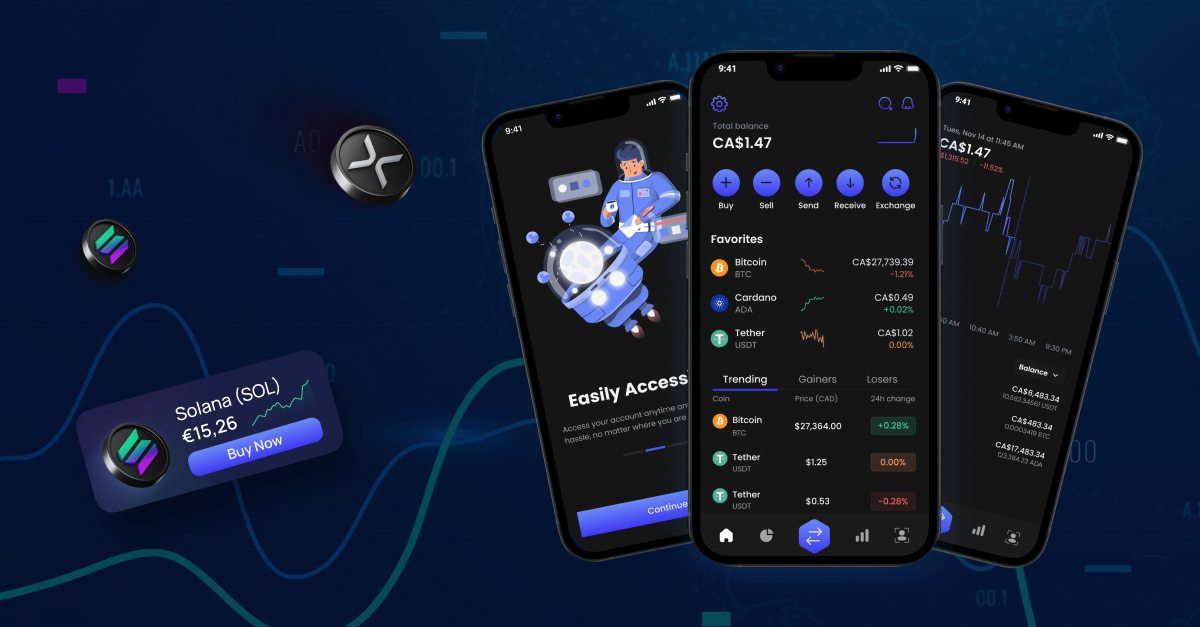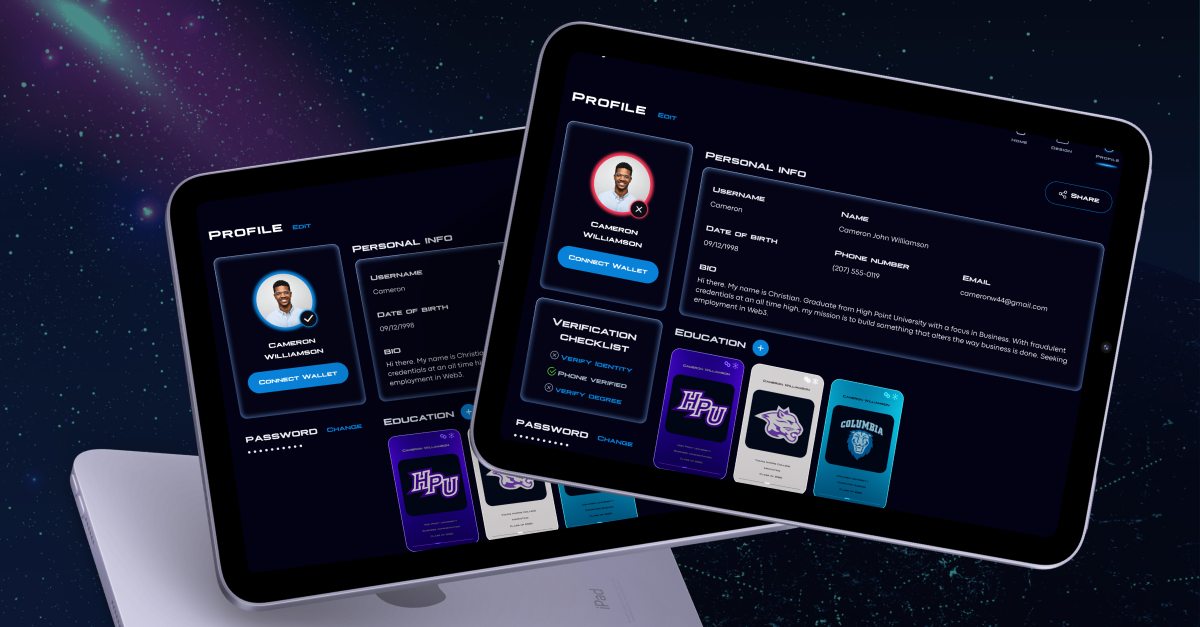Blockchain technology is expanding its utilization areas, and its integration can already bring many benefits in healthcare, insurance, real estate, and other areas. Because of the diversity of applications, different types of blockchain are needed to help customize the technology.
Key Statistics
 1,43 billion
1,43 billion
By 2032, the blockchain market will be valued at $1,431.54 billion.
 CAGR of 87.7 %
CAGR of 87.7 %
The Blockchain market is forecast to grow at a CAGR of 87.7% from 2023 to 2032.
 61% of global revenue
61% of global revenue
As of 2022, public blockchains account for 61% of global blockchain revenue.
What is the Blockchain?
Blockchain is a decentralized ledger technology that records and stores transactions. They are verified and confirmed by a network of nodes and stored in blocks. Each block is linked to the previous one using an advanced cryptographic hash function, creating a permanent record of all transactions on the network.

How is Blockchain Different from Traditional Database Models?
Blockchain groups nodes differ from traditional databases because they are decentralized. The data is stored and managed by a distributed network of nodes, and all participants can see the same data, which, combined with the immutability of the data, makes the system unprecedentedly transparent and accountable.
Blockchain has immense potential to automate the validation and processing of information via precise smart contracts.
Whereas traditional databases rely on a single central authority to validate transactions and a central database, hacking of which results in significant losses.
Additional Blockchain Types
Permissioned
Federated
Sidechains
Permissioned
The permissioned type of blockchains (that are sometimes referred to as private permissioned blockchain) are similar to the private blockchain. The only difference is their access control mechanisms. While permissioned blockchain allows authorized access to a larger group beyond a single organization, private blockchain is limited to a specific group of people.
Federated
Federated and Consortium blockchain types share similarities, but a key difference lies in how they operate. Consortium Blockchains entail collaborative infrastructure and equal control among consortium members. In contrast, Federated Blockchains involve the connection of autonomous blockchains to facilitate communication between them.
Sidechains
Sidechains are relatively new blockchain models whose idea is to take the load off the main chain by delegating the computation to different blockchains. It creates a tight connection between the sidechain and the main chain, which allows the sidechain to handle the processes and return the results. It is the most promising solution to the blockchain scalability issue, especially for the top blockchain networks like Ethereum.
Is Blockchain and Cryptocurrency the Same?
Blockchain and cryptocurrency are related yet distinct entities. Blockchain is the fundamental technology that empowers cryptocurrencies. Essentially, it is a digital ledger that securely records transactions in a decentralized manner. Cryptocurrencies are digital or virtual currencies that rely on cryptography for security and function autonomously from central banks.
Cryptocurrencies are available for purchase, sale, and trade on digital currency exchanges. They can also be used to buy products and services from merchants who accept them as payment.
The primary distinction between blockchain and cryptocurrencies is that blockchain is the technology supporting the existence of cryptocurrencies, whereas cryptocurrencies are digital assets primarily based on blockchain technology. And not all blockchains have their cryptocurrencies because they can serve other functions beyond just powering cryptocurrencies.

Does All Cryptocurrency Use Blockchain?
Most cryptocurrencies use different types of blockchain technology as their primary technology, but there are a few exceptions. For instance, IOTA relies on another technology called Tangle, a type of distributed ledger based on directed acyclic graphs (DAGs). Unlike blockchain, Tangle facilitates faster and more scalable transactions, which makes it ideal for IOTA’s focus on the Internet of Things (IoT) and microtransactions.
Another example is Hashgraph, which employs a consensus algorithm named “gossip about gossip” to achieve high transaction speeds and scalability. Hedera Hashgraph is a public network that utilizes this technology as its primary consensus mechanism, and it can be used as base technology in cryptocurrency development.

How Many Cryptos Are There?
According to Statista, there are approximately 9,000 cryptocurrencies as of 2023. Forbes Advisor referencing CoinMarketCap also suggested that the number may exceed 20,000. However, this figure does not accurately reflect the current state of the cryptocurrency market.
In truth, the top 20 cryptocurrencies account for roughly 90% of the entire market, leaving the rest with limited influence.
Furthermore, most of these currencies are currently inactive. Creating a cryptocurrency is relatively easy, but it is difficult to attract a broad audience to keep it viable.
What Are the Different Types of Tokens in Blockchain?
-
Security Tokens
Security tokens represent real assets such as stocks, bonds, real estate, or art. They are subject to securities laws and provide investors the same rights and guarantees as traditional securities. Securities tokens can be traded on secondary markets, providing liquidity for investors.
Some examples of security tokens include real estate investment trusts (REITs), allowing investors to receive income from owning real estate; equity securities, representing a stake in a company and give investors the right to receive dividends and participate in corporate decisions; and debt securities, which represent a loan agreement and allow investors to receive interest and repay the debt at maturity.
-
Transactional Tokens
Transaction tokens are digital tokens utilized on a blockchain network for exchange. Its variation used to prevent fluctuation in cryptocurrency prices is known as stable tokens. These tokens are anchored to the value of fiat currencies or commodities, like Tether and USD Coin.
Payment tokens like Bitcoin, Ethereum, and Litecoin are employed for transactions within the blockchain system.
Cryptocurrencies, like Monero and Zcash, allow users to carry out transactions while maintaining their anonymity and without revealing transaction details. This case shows one disadvantage of a cryptocurrency is that it can be used for criminal activities.
-
Utility Tokens
Utility tokens enable users to access a company’s products or services instead of owning shares in the company. They are issued through an initial coin offering (ICO) or token sale process. Utility tokens do not provide ownership rights, only the right to use the company’s products or services.
For instance, Golem Network Tokens (GNT) grant access to decentralized computing power, while Basic Attention Tokens (BAT), based on the Brave browser, reward users for viewing advertisements.
-
Governance Tokens
Governance tokens, also known as management tokens or governance coins, grant holders the right to partake in decision-making processes regarding the development and operation of a blockchain project.
One instance of a governance token is MKR (Maker), which governs the MakerDAO protocol. MKR token holders can vote on determinations connected to stability fees, types of collateral, and oracle utilization in the MakerDAO system.
-
Non-Fungible Tokens
Non-fungible tokens (NFTs) are unique digital assets representing ownership of a particular item or content. NFTs are one-of-a-kind and cannot be replicated or replaced. It makes them ideal for applications where authenticity and provenance are necessary, such as digital art, collectibles, and gaming items.
NFTs are created using blockchain technology, which provides a secure and transparent record of ownership and transactions. Each NFT is represented by a unique token on the blockchain, which can be bought, sold, or traded like any other asset.
How Would the Intellectual Rights of the Blockchain Be Classified?
Blockchain technology owners have various intellectual property options for safeguarding their rights. Patents are one of them. It granted for new and non-obvious inventions, including blockchain technology itself and its associated applications.
Copyrights protect original works of authorship, including program codes, technical documents, and other technology-related content.
Trademarks can be registered to shield commerce-related brand names, logos, and symbols, so others are prohibited from using these marks.
Trade secret protection measures safeguard private business information, such as algorithms or processes used in blockchain technology, through non-disclosure agreements and other legal actions.
Interexy as a Leading Blockchain Development Provider
Interexy is awarded as one of the leading blockchain development companies. With proficiency in main blockchain frameworks and networks, like Ethereum, Hyperledger Fabric, Graphene and Polygon, we offer developers with relevant expertise and skills in Solidity, Rust, Vyper, Golang, Java, Python, C++ and JavaScript programming languages.
We supply engineers within 10 business days,
FAQs
-
What are the different types of blockchains?
4 types of blockchain networks are the main ones: Public, Private, Hybrid, and Consortium blockchains.
Public blockchain networks are open to anyone and have no restrictions.
Private blockchain networks are accessible only to participants, typically within the same organization, and provide more control over security and privacy.
Hybrid blockchain networks combine elements of public and private blockchains, allowing for more flexibility and customizability.
Consortium blockchains are managed by a group of organizations, where each organization has equal rights and responsibilities.
The additional types of blockchain platforms include Permissioned, Federated, and Sidechains.
-
Does all cryptocurrency use blockchain?
Most cryptocurrencies rely on blockchain technology as their primary system, although there are a few exceptions, such as cryptocurrencies using directed acyclic graphs (DAGs). Hashgraph, on the other hand, uses a consensus algorithm called “gossip about gossip” to achieve high transaction speeds and scalability.
Hedera Hashgraph uses it. So, while blockchain is the most commonly used cryptocurrency technology, it’s not the only option available.
-
Is there more than one blockchain?
There are many different blockchains in existence. While the first and most well-known blockchain is the Bitcoin blockchain, thousands of other blockchains have been created for various purposes.
Some examples of other popular blockchains include Ethereum, Litecoin, Ripple, and EOS. These blockchains all have their unique features and use cases, and they operate independently of each other.
-
How many blockchain platforms are there?
According to Statista, there are around 9,000 blockchain platforms, which is significantly lower than the 20,000 figure cited by Forbes Advisor with reference to CoinMarketCap. Most are inactive as they struggle to maintain a user base that promotes network vitality. If we make a blockchain platform comparison, there is a disparity in capitalization, with the top 20 blockchains owning approximately 90% of the market.







